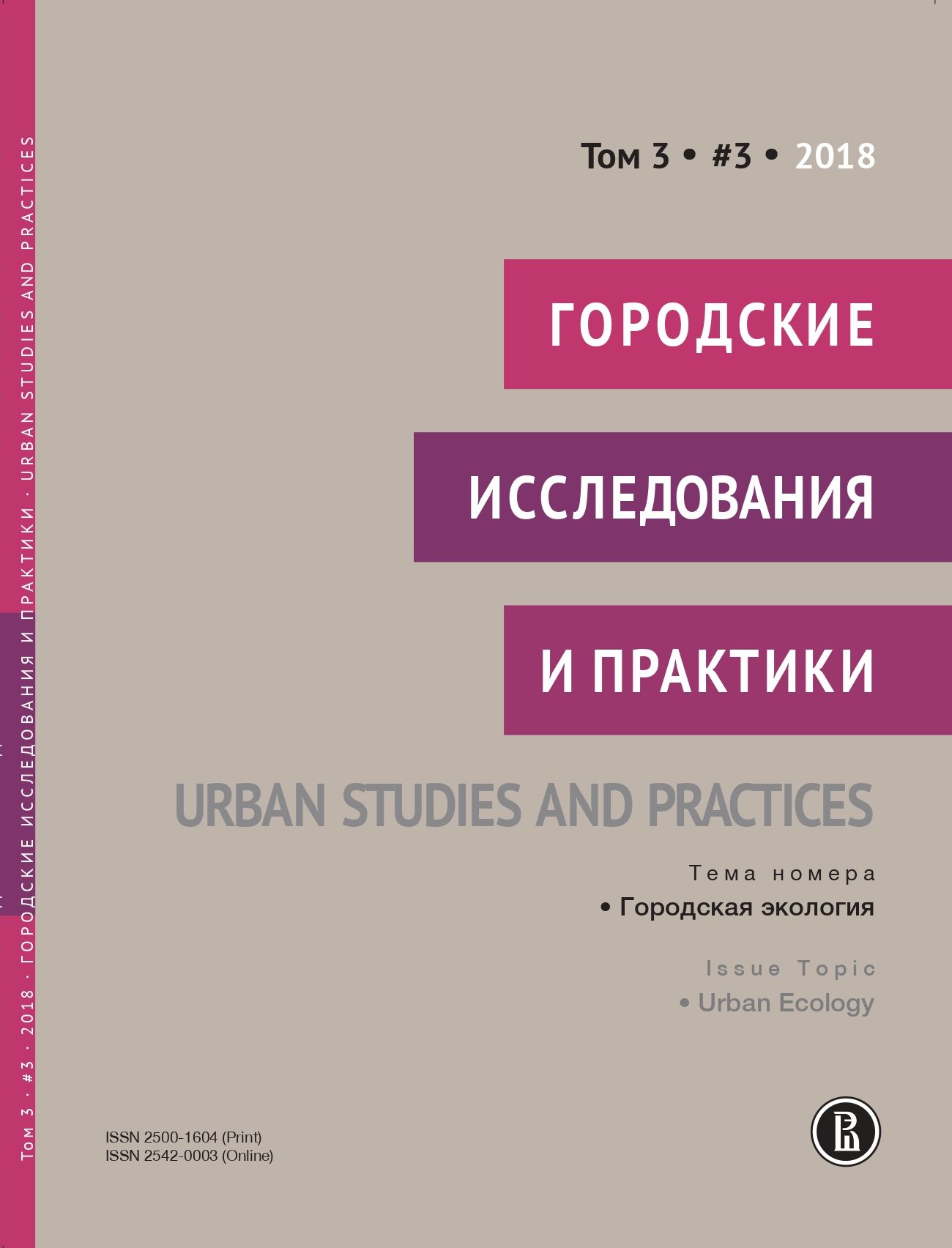Review: Road Transport as the Key Source of Environmental Pollution in Cities, and the Associated Human Health Risks
Abstract
Road transport is a necessary attribute of urban environment. Fuel vehicles emit a great variety of pollutants, transform the environment and pose human health risks. This problem is highly recognized in the EU and US, while it is out of sufficient attention in other countries.
This review article highlights road traffic as the key source of environmental pollution in cities and the associated adverse effects on human health. This problem is reviewed in details and possible solutions related traffic management, fuel quality increase and roadside territories design are described.
This article is written for educational purposes to direct the attention of academia, government and businesses to road traffic as the key source of environmental pollution in the urban environment. It is especially useful for urbanists considering the negative effects of motor vehicles for human well-being in sustainable city planning.
Downloads
References
Abhijith K.V. et al. (2017) Air Pollution Abatement Performances of Green Infrastructure in Open Road and Built-up Street Canyon Environments – A Review. Atmospheric Environment, vol. 162, pp. 71–86.
American Lung Association (2018) Living Near Highways and Air Pollution. Available at: [http://www.lung.org/our-initiatives/healthy-air/outdoor/air-pollution/highways.html](http://www.lung.org/our-initiatives/healthy-air/outdoor/air-pollution/highways.html) (accessed 16 September 2018).
Australian Government (2005) Nitrogen Dioxide (NO2). Air Quality Fact Sheet. Department of the Environment and Energy. Available at: [http://www.environment.gov.au/protection/publications/factsheet-nitrogen-dioxide-no2](http://www.environment.gov.au/protection/publications/factsheet-nitrogen-dioxide-no2) (accessed 16.09.2018).
Babisch W. (2002) The Noise/Stress Concept: Risk Assessment and Research Needs. Noise Health, vol. 4, no 16, pp. 1–11.
Baldauf R. et al. (2008) Impacts of Noise Barriers on Near-road Air Quality. Atmospheric Environment, vol. 42, no 32, pp. 7502–7507.
Chen H. et al. (2017) Living Near Major Roads and the Incidence of Dementia, Parkinsonʼs Disease, and Multiple Sclerosis: A Population-based Cohort Study. The Lancet, vol. 389, no 10070, pp. 718–726.
DieselNet. Emission standards. EU: Cars and Light Trucks. Available at: [https://www.dieselnet.com/standards/eu/ld.php](https://www.dieselnet.com/standards/eu/ld.php) (accessed 16 September 2018).
Enda M., Owen D. (2018) Population Exposure to Road Traffic Noise: Experimental Results from Varying Exposure Estimation Approaches. Transportation Research. Part D, vol. 58, pp. 70–79.
Federal Law of the Russian Federation N 34-FZ (2003) On Restriction of Turnover of Leaded Gasoline in the Russian Federation. Moscow.
Forman R.T.T. (2014) Urban Ecology. Science of Cities. Cambridge: Cambridge University Press.
Gałuszka A.·et al. (2011) The Influence of Chloride Deicers on Mineral Nutrition and the Health Status of Roadside Trees in the City of Kielce, Poland. Environ Monit Assess, vol. 176, pp. 451–464.
Gennadiev A. et al. (2015) Hydrocarbons in soils: Origin, Composition, and Behavior (review). Eurasian Soil Science, vol. 48, pp. 1195–1209.
Green Car Report (2014) 1.2 Billion Vehicles On Worldʼs Roads Now, 2 Billion By 2035: Report. Available at: [https://www.greencarreports.com/news/1093560_1-2-billion-vehicles-on-worlds-roads-now-2-billion-by-2035-report](https://www.greencarreports.com/news/1093560_1-2-billion-vehicles-on-worlds-roads-now-2-billion-by-2035-report) (accessed 16 September 2018).
Grimmer G. (1983) Environmental Carcinogens: Polycyclic Aromatic Hydrocarbons. CRC Press, Boca Raton.
Laumbach R., Kipen H. (2012) Respiratory Health Effects of Air Pollution: Update on Biomass Smoke and Traffic Pollution. Journal of Allergy and Clinical Immunology, vol. 129, pp. 3–11.
Lin M.Y. et al. (2016) The Effects of Vegetation Barriers on Near-road Ultrafine Particle Number and Carbon Monoxide Concentrations. The Science of the Total Environment, vol. 553, pp. 372–379.
Lu Y. et al. (2007) Chemical Fractionation of Heavy Metals in Urban Soils of Guangzhou, China. Environ Monit Assess, vol. 134, pp. 429–439.
Nikolaeva O., Rozanova M., Karpukhin M. (2017) Distribution of Traffic-related Contaminants in Roadside Soils Across a Highway in Moscow. Journal of Soils and Sediments, vol. 17, no 4, pp. 1045–1053.
Raaschou-Nielsen O. et al. (2012) Traffic Air Pollution and Mortality from Cardiovascular Disease and All Causes: a Danish Cohort Study. Environmental Health, vol. 11, p. 60. Available at: [http://doi.org/10.1186/1476-069X-11-60](http://doi.org/10.1186/1476-069X-11-60) (accessed 16 September 2018).
Takada H. et al. (1991) Distribution and Sources of Polycyclic Aromatic Hydrocarbons (PAHs) in Street Dust from Tokyo Metropolitan Area. Science Total Environ, vol. 107, pp. 45–69.
Tong Z. et al. (2016) Roadside Vegetation Barrier Designs to Mitigate Near-road Air Pollution Impacts. The Science of the Total Environment, vol. 541, pp. 920–927.
United Nations (2014) Population Division. 2014 Revision of the World Urbanization Prospects. Available at: [http://www.un.org/en/development/desa/publications/2014-revision-world-urbanization-prospects.html](http://www.un.org/en/development/desa/publications/2014-revision-world-urbanization-prospects.html) (accessed 16 September 2018).
US EPA (2014) Near Roadway Air Pollution and Health: Frequently Asked Questions. Office of Transportation and Air Quality EPA-420-F-14-044. Available at: [https://nepis.epa.gov/Exe/ZyPDF.cgi/P100NFFD.PDF?Dockey=P100NFFD.PDF](https://nepis.epa.gov/Exe/ZyPDF.cgi/P100NFFD.PDF?Dockey=P100NFFD.PDF) (accessed 16 September 2018).
US EPA (United States Environmental Protection Agency). Nitrogen Dioxide (NO2) Pollution. Basic Information about NO2. Available at: [https://www.epa.gov/no2-pollution/basic-information-about-no2#What%20is%20NO2](https://www.epa.gov/no2-pollution/basic-information-about-no2#What%20is%20NO2) (accessed 16.09.2018).
US EPA (United States Environmental Protection Agency). (2014) Priority Pollutant List. Available at: [https://www.epa.gov/sites/production/files/2015-09/documents/priority-pollutant-list-epa.pdf](https://www.epa.gov/sites/production/files/2015-09/documents/priority-pollutant-list-epa.pdf) (accessed 16.09.2018).
US EPA (United States Environmental Protection Agency). (2014) Report on the Environment. Available at: [https://cfpub.epa.gov/roe/indicator_pdf.cfm?i=23](https://cfpub.epa.gov/roe/indicator_pdf.cfm?i=23) (accessed 16 September 2018).
Van Bohemen H.D., Van De Laak W.H.J. (2003) The Influence of Road Infrastructure and Traffic on Soil, Water, and Air Quality. Environ Manag., vol. 31, pp. 50–68.
Vette A. et al. (2013) Community Action Against Asthma Steering Committee. The Near-Road Exposures and Effects of Urban Air Pollutants Study (NEXUS): Study Design and Methods. The Science of the Total Environment, vol. 448, pp. 38–47.
Werkenthin M., Kluge B., Wessolek G. (2014) Metals in European Roadside Soils and Soil Solution — A Review. Environ Pollut, vol. 189, pp. 98–110.
WHO (World Health Organization). (2006) Air Quality Guidelines for Particulate Matter, Ozone, Nitrogen Dioxide and Sulphur Dioxide. Global Update 2005, 2006. Available at: [http://apps.who.int/iris/bitstream/handle/10665/69477/WHO_SDE_PHE_OEH_06.02_eng.pdf;jsessionid=3DA5BB2E5F-04D9CC87A18204056DEBF7?sequence=10](http://apps.who.int/iris/bitstream/handle/10665/69477/WHO_SDE_PHE_OEH_06.02_eng.pdf;jsessionid=3DA5BB2E5F-04D9CC87A18204056DEBF7?sequence=10) (accessed 16 September 2018).
WHO (World Health Organization). (2011) Burden of Disease from Environmental Noise: The WHO European Centre for Environment and Health. Bonn Office. Available at: [http://www.euro.who.int/__data/assets/pdf_file/0008/136466/e94888.pdf](http://www.euro.who.int/__data/assets/pdf_file/0008/136466/e94888.pdf) (accessed 16 September 2018).
WHO (World Health Organization). (2000) Chapter 5.5. Carbon Monoxide. Available at: [http://www.euro.who.int/__data/assets/pdf_file/0020/123059/AQG2ndEd_5_5carbonmonoxide.PDF](http://www.euro.who.int/__data/assets/pdf_file/0020/123059/AQG2ndEd_5_5carbonmonoxide.PDF) (accessed 16 September 2018).
WHO (World Health Organization). (2005) Health-effects of Transport-related Air Pollution / M. Krzyzanowski, B. Kuna-Dibbert, J. Schneider (eds). Available at: [http://www.euro.who.int/__data/assets/pdf_file/0006/74715/E86650.pdf](http://www.euro.who.int/__data/assets/pdf_file/0006/74715/E86650.pdf) (accessed 16.09.2018).

